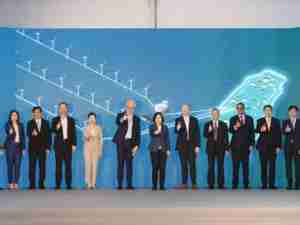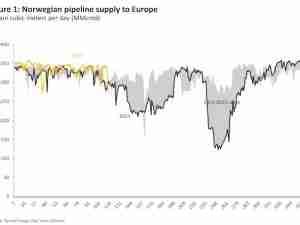India’s Top Utility Said to Seek End to Imported-Gas Supply Deal
By: Rajesh Kumar Singh and Debjit Chakraborty | Aug 05 2016 at 02:31 PM | International Trade
State-run NTPC Ltd., India’s biggest power producer, is seeking to terminate a long-term supply contract for imported natural gas as it says the fuel is too expensive to be used in power generation, according to people with knowledge of the situation.
The New Delhi-based electricity generator has written to state-run GAIL India Ltd., which supplies the fuel sourced overseas by its affiliate Petronet LNG Ltd., saying it’s become impossible to execute the contract as the company is unable to sell the power it generates from the fuel, said officials from all three companies, who asked not to be identified, citing company policy. NTPC signed a 20-year contract with GAIL in 2009 to buy 2 million metric standard cubic meters a day of gas, the people said.
The contract dispute highlights the country’s difficulty switching from coal to natural gas for power generation, undermining Prime Minister Narendra Modi’s efforts to cut carbon emissions and promote clean energy. The country’s gas-fired plants, which can generate nearly 25 gigawatts of power, are running at less than a quarter of their capacity. Transportation costs and taxes have countered the 27 percent decline in spot LNG prices in the past year.
“In India’s power sector, gas will find it difficult to weaken the dominance of coal in the next few years,” said Abhishek Kumar, an analyst at Interfax Energy’s Global Gas Analytics in London. “Regasified LNG is still not cost-competitive with coal, after local transportation costs and taxes are taken into account. India needs to improve its gas-pipeline infrastructure substantially to boost the popularity of gas in the power sector.”
NTPC has been taking less than 10 percent of its contracted volume, forcing GAIL to levy so-called take-or-pay penalty charges, the officials said. NTPC and GAIL declined to comment. Petronet didn’t respond to requests for comment.
The cost of power generated from GAIL’s gas is about 7 rupees per kilowatt hour, according to an NTPC official. That’s more than double the 3.18 rupee average price at which NTPC sold power in the year to March 31, and more than three times the current national average spot price. Indian regulations require electricity retailers to buy power from the cheapest sources available, which makes it difficult for a generator to sell more-expensive electricity.
NTPC’s combined 4 gigawatts of gas-fired generation account for about 9 percent of its total capacity. Its seven gas plants ran at 25 percent of their capacity in the year ended March 31, compared with 33 percent in the prior year, the company said in May.
Additional Costs
India’s power plants during the first four months of this year consumed about one-third of the country’s domestically produced gas and about 13 percent of its imported LNG—accounting for almost 24 percent of the country’s total 16.2 billion cubic meters of gas use during the period, according to Ashish Sethia, head of Asia-Pacific gas and power analysis at Bloomberg New Energy Finance.
NTPC rose 1.5 percent to 161.45 rupees, while GAIL climbed 2.3 percent to 382.55 rupees at the close in Mumbai Friday. Petronet declined 0.7 percent to 310.50 rupees. The benchmark S&P BSE Sensex Index climbed 1.3 percent.
Petronet LNG, India’s biggest gas importer, renegotiated a 25-year contract with Qatar’s RasGas Co. last year, resulting in a reworked price formula that caused the cost of cargoes to immediately fall by almost half. Petronet sells the fuel to companies including GAIL and Indian Oil Corp., which have their own deals to sell it on to end consumers, such as NTPC.
The landed price of Qatari LNG at Petronet’s Dahej terminal in Gujarat was about $5 per million British thermal units, the company said in May. About $2 per million Btu is added to the price by the time the gas reaches the northern part of the country, where NTPC has three of its biggest gas-fired plants, said the official from the power utility.
India’s 16,250 kilometer (10,100 mile) gas-pipeline network transmitted an average 148.39 million cubic meters of natural gas a day in the year ended March 31, using only about 38 percent of the system’s capacity, according to the oil ministry’s Petroleum Planning & Analysis Cell.










